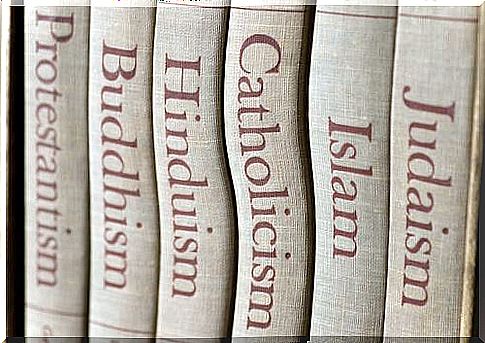Cognitive Psychology Of Religions

How to understand religions? Although religions have been studied by sociology and anthropology, psychology can also help. In fact, the cognitive psychology of religions gives us clues as to why we believe in the precepts of religions.
Many writers have spoken of the functions of religion and its ability to fill in gaps. In contrast, none of the research seems useful in understanding all religions. In other words, people do not choose a religion to satisfy a need. In fact, it is religions that satisfy different needs of individuals in different contexts.
From the point of view of cognitive psychology, the adoption of a religion depends in large part on basic processes. Memory is a good example. The way in which religions are transmitted and practiced will determine how they are remembered and will have a direct bearing on the acceptance of its precepts.

The two modes of religiosity
Generally, all religions believe in gods, spirits and / or ghosts. They are all reduced to supernatural beings. For this reason, these beings have characteristics that go beyond the human being. They are, for example, immortal or endowed with the ability to see what is happening anywhere in the world. They are also generally credited with the ability to change the fate of humans.
In this way, supernatural beings are not tied to the limits of humanity. The strangest thing is that these beings are perfectly accepted if they are part of a religious doctrine but are absolutely not credible if they are not part of it. For example, a large part of those who believe in a God would say that ghosts or fairies are unreal. To understand how we are able to accept the beliefs of religions, we must have recourse to the theory of the two modes of religiosity.
According to this theory developed by Harvey Whitehouse, there are two modes of religiosity. They correspond to the doctrinal mode and to the imaginary mode. The different religions must be in one or the other mode.
On the one hand, let us present the doctrinal mode. In this mode, the meaning of rituals is learned, there is no real social cohesion, there are leaders, religion spreads rapidly and it can reach a universal level.
On the other hand, let’s present the imaginary mode. In this mode, the meaning of the rituals is generated, the cohesion is intense, the leadership is passive and the spread of religion is slow and limited to an ethnic level.
Doctrinal mode
The doctrinal mode requires constant communication. The rituals are given repeatedly. For example, for Christianity it is important to take Communion and go to Mass at least once a week. This repetition involves running the risk of falling into boredom, but it encourages implicit memory. This memory is the one that allows us to know how to ride a bike. Without knowing it, thanks to it, we learn to do things automatically.
This type of memory reduces thinking and innovation. It creates less critical people who accept the tenets of religion by claiming that “it has always been so”. However, not all knowledge is implicit. Knowledge of doctrine is taught through catechism.
This type of religiosity thus includes leaders who transmit knowledge and can count on hierarchical structures of power. These structures as well as the lack of individual reflection and innovation increase the acceptance of interpretations of religion.

Imaginary mode
The imaginary mode, unlike the doctrinal mode, maintains rituals at a much lower frequency. This is the case, for example, with initiation rituals that take place once in a lifetime. This type of ritual is associated with very strong emotions, positive or negative, which generates a strong cohesion. This is why it is not common to see very large communities being generated. Those who take part in the rituals are naturally suspicious.
This mode of religiosity awakens episodic memory. This type of memory allows us to remember certain episodes very well, remembering all the details associated with them. In addition, this type of memory encourages spontaneous reflection which is characterized by the transformation of information. For example, by using analogies or metaphors. In this way, the interpretations that arise are different. There is therefore generally no leader.
Going back to the beginning, the cognitive psychology of religions can explain why we believe in supernatural beings. According to the doctrinal mode, the lack of critical sense as well as the association of the explicit memory and the implicit memory can justify the acceptance of this existence. According to the imaginary mode, the imagination which detaches itself from the episodic memory can lead to the same conclusion.










